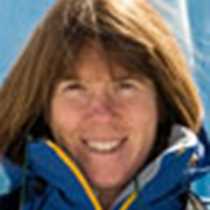Funter Bay and Juneau
Admiralty Island, “Kootznahwoo” in native Tlingit, “Fortress of the Bears.” The island is immense, 1500 square miles in area, the brown bear population, impressive. Most of the island is preserved as a national monument, covered with old growth temperate rainforest, with high snowy mountains and streams full of salmon. We are headed to one of a few places where some people live, a bay on the northwest side of the island, called Funter Bay. We are here for some walks, for a chance to experience the forest and shoreline and also to look for signs of past human activity.
In the early part of the last century this bay hosted a gold mine and a fish cannery. Today some of the old homesteads are intact. It’s hardly crowded: ten to twenty people live here. We find artifacts from the cannery days all along our trail. After nearly a century, cabins have become picturesque, slumping back toward the forest floor and festooned with living plants. We count the age of a small spruce on one used-to-be-roof: 25 years old. There’s a barge, once undoubtedly at the high tide line, but now surrounded by trees as the land continues to rise relative to sea level in this part of Alaska. Its deck is a garden now, green with plants and moss, but on the sides we can still detect flecks of red paint and the chiseled inscription, “Ketchikan Juneau Seattle.” Just where you might want to go, if you were a barge, carrying cans of salmon to the world.
We relax after our hike with photos and stories by Flip Nicklin while we head toward Juneau, with a scenic cruise by the Point Retreat Lighthouse at the northern tip of Admiralty. A few humpback whales spout as if to say yes, even here, on the outskirts of the biggest city in Southeast Alaska, it is still wild. We get in motorcoaches and make the short drive to the Mendenhall Glacier, to discover that this, too, is a great place for walking. Here the trails are prepared, groomed; we can hike without our rubber boots. A stream holds the last of the sockeye salmon. A porcupine ambles its slow way along. Lacy small waterfalls cascade over rocks, middle-size waterfalls bounce and shout their way down, and a huge roaring monster of a waterfall dwarfs the size of us puny humans. We’re surrounded by young forest; this place was covered by glacier less than a century ago. It’s a great place, in this season, for mushrooms. And there is the glacier itself, of course, backdrop to the whole scene, a blue and white river of ice, with Mendenhall Lake in front of it playing host to a fleet of bergs.
And now, it is time for downtown, and the State Museum. There is time, too, to stroll through town. The main street hasn’t changed much from Juneau’s early mining days – there are more than 300 historic buildings downtown – and this is the area miners passed through, on their way home from the mine. Then, as now, there were tempting ways to spend money. It is a place crowded with novel sights, to our wilderness-conditioned eyes. Coffee shops. Gift shops. Jewelry stores. Restaurants. People, and not all of them us. As I write, a few guests are headed off to the Alaskan Bar, which has been operating at the same location (and with largely the same décor) since 1913, to have an Alaskan Ale at the Alaskan with, perhaps, an Alaskan. Welcome to the Capital City.




